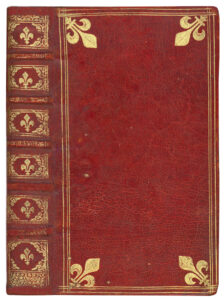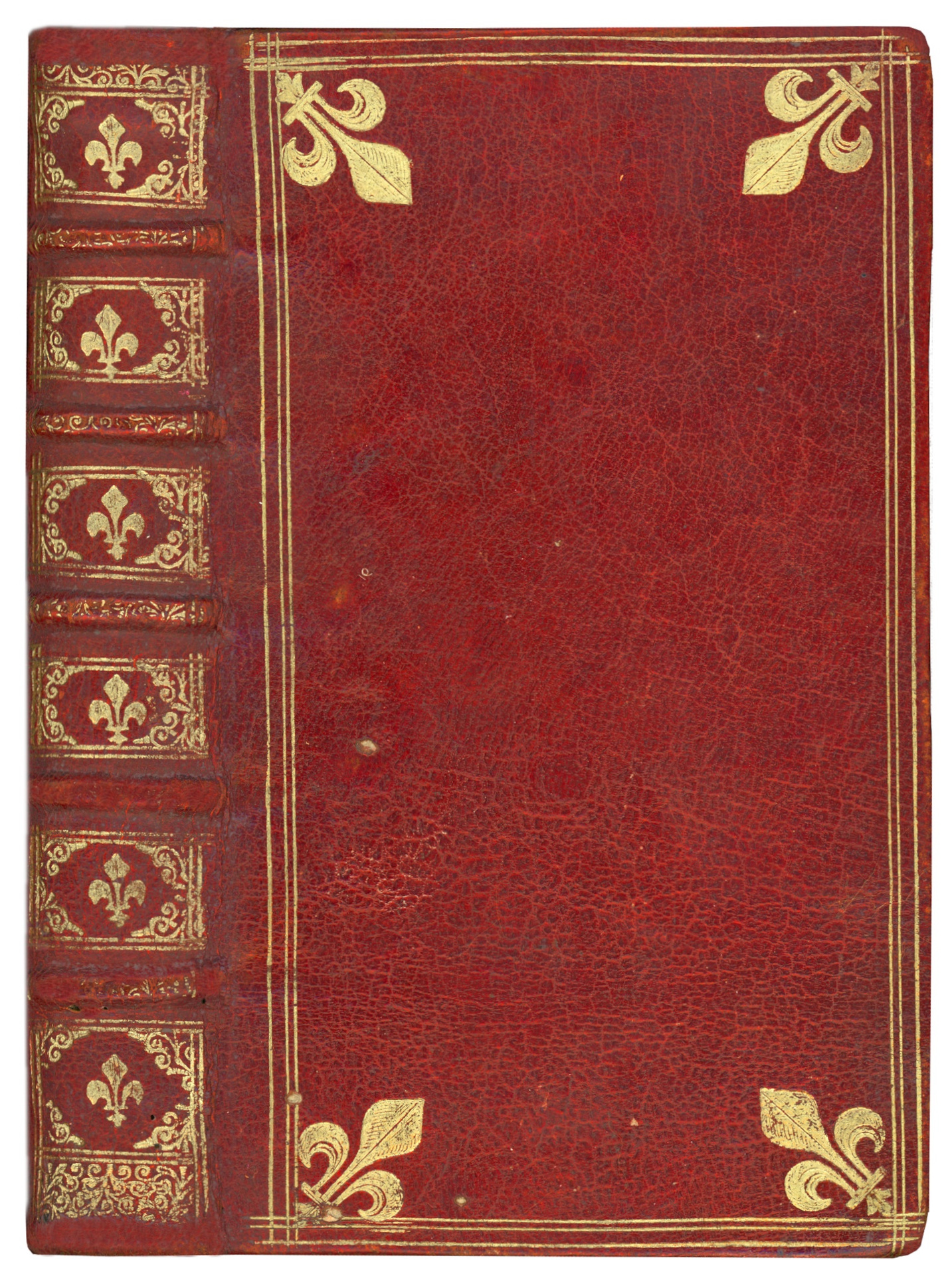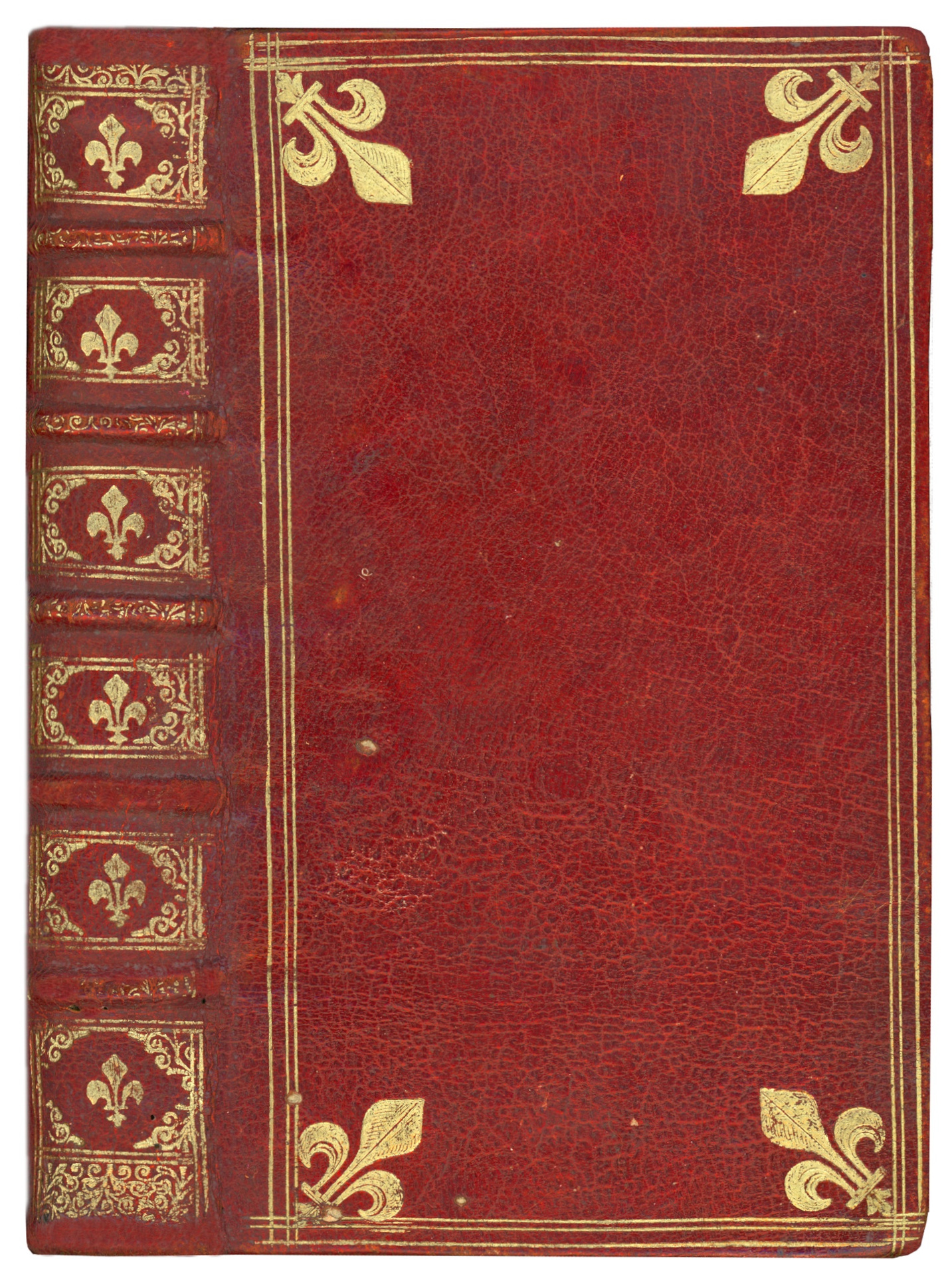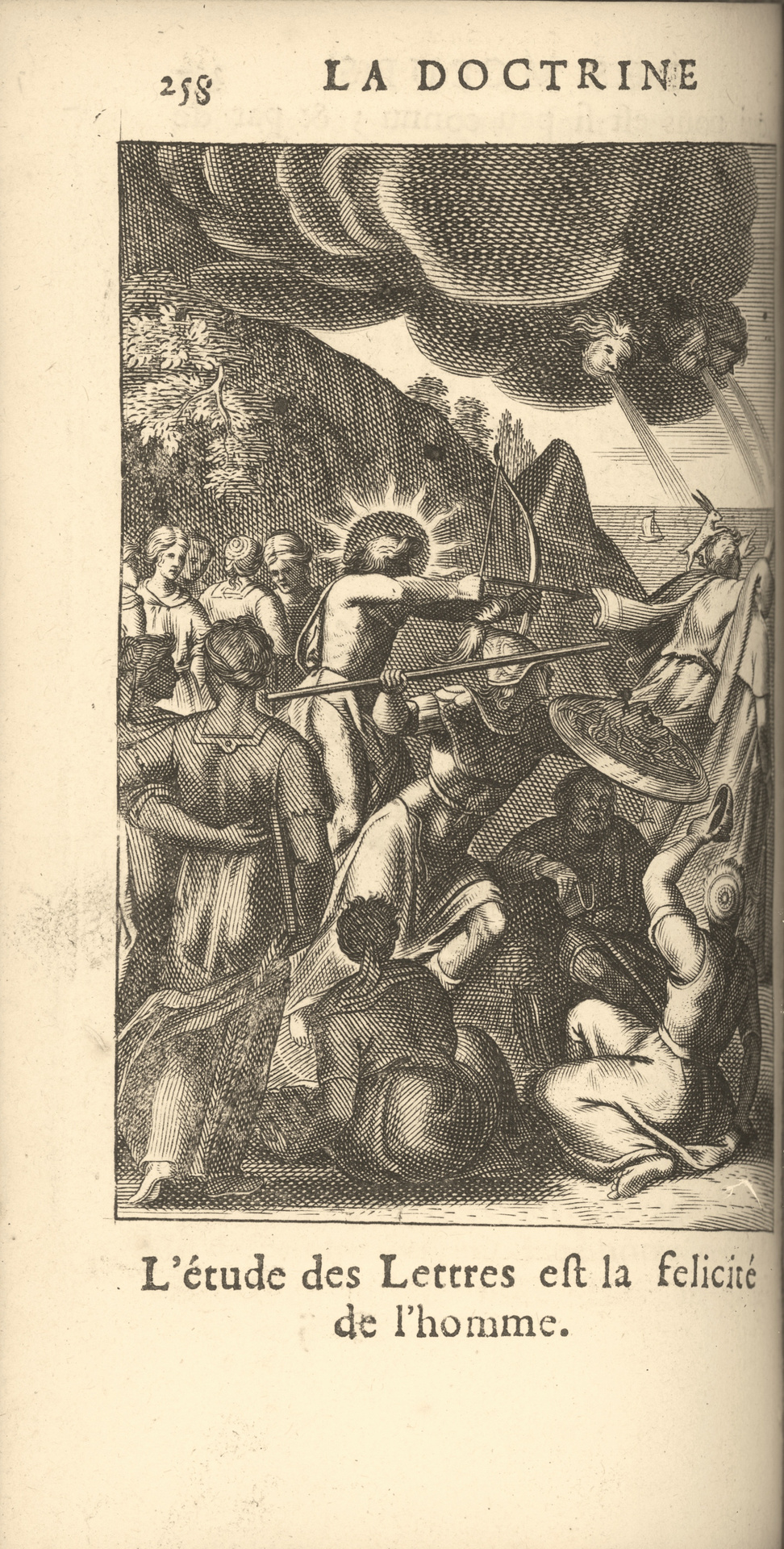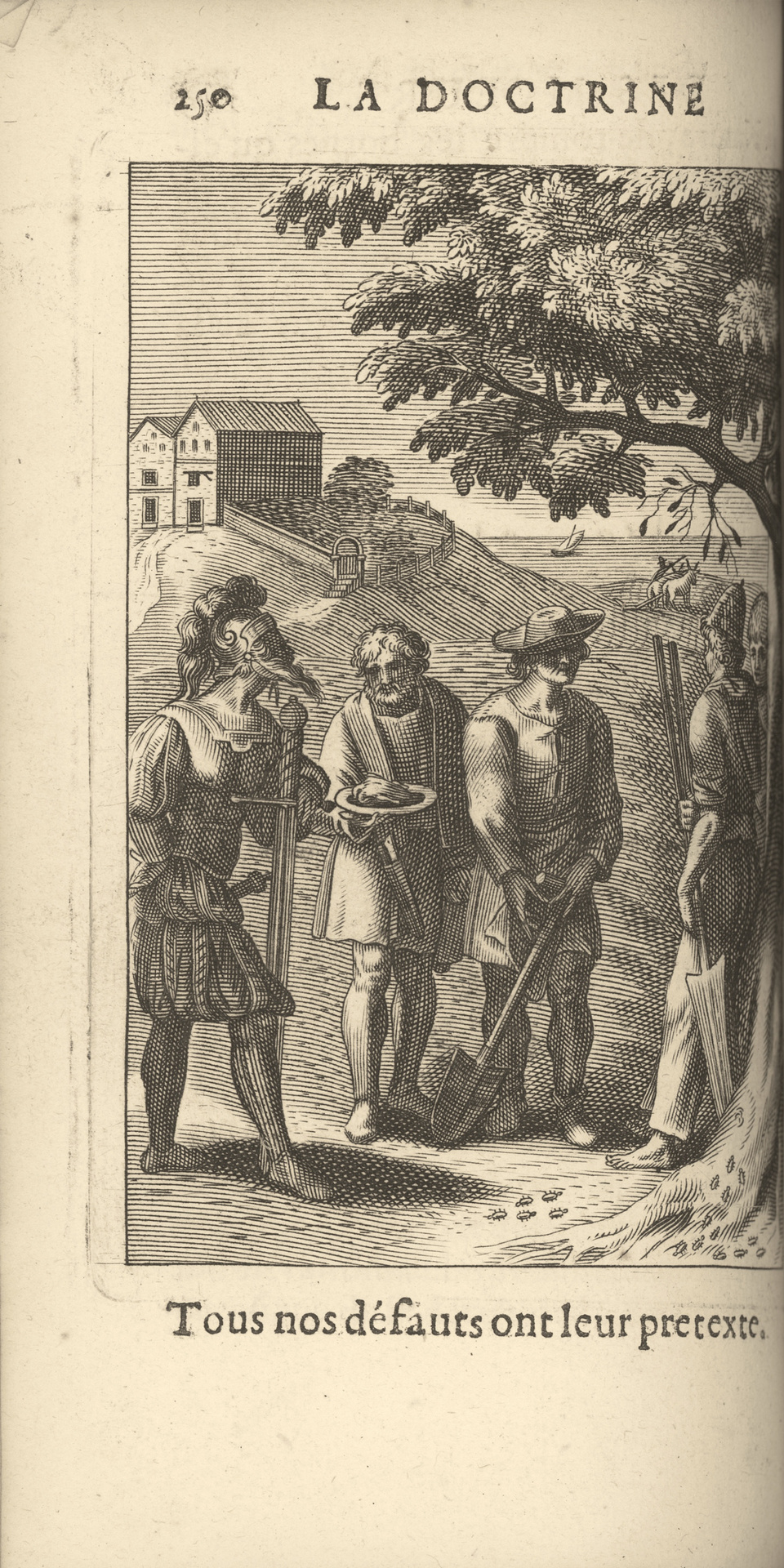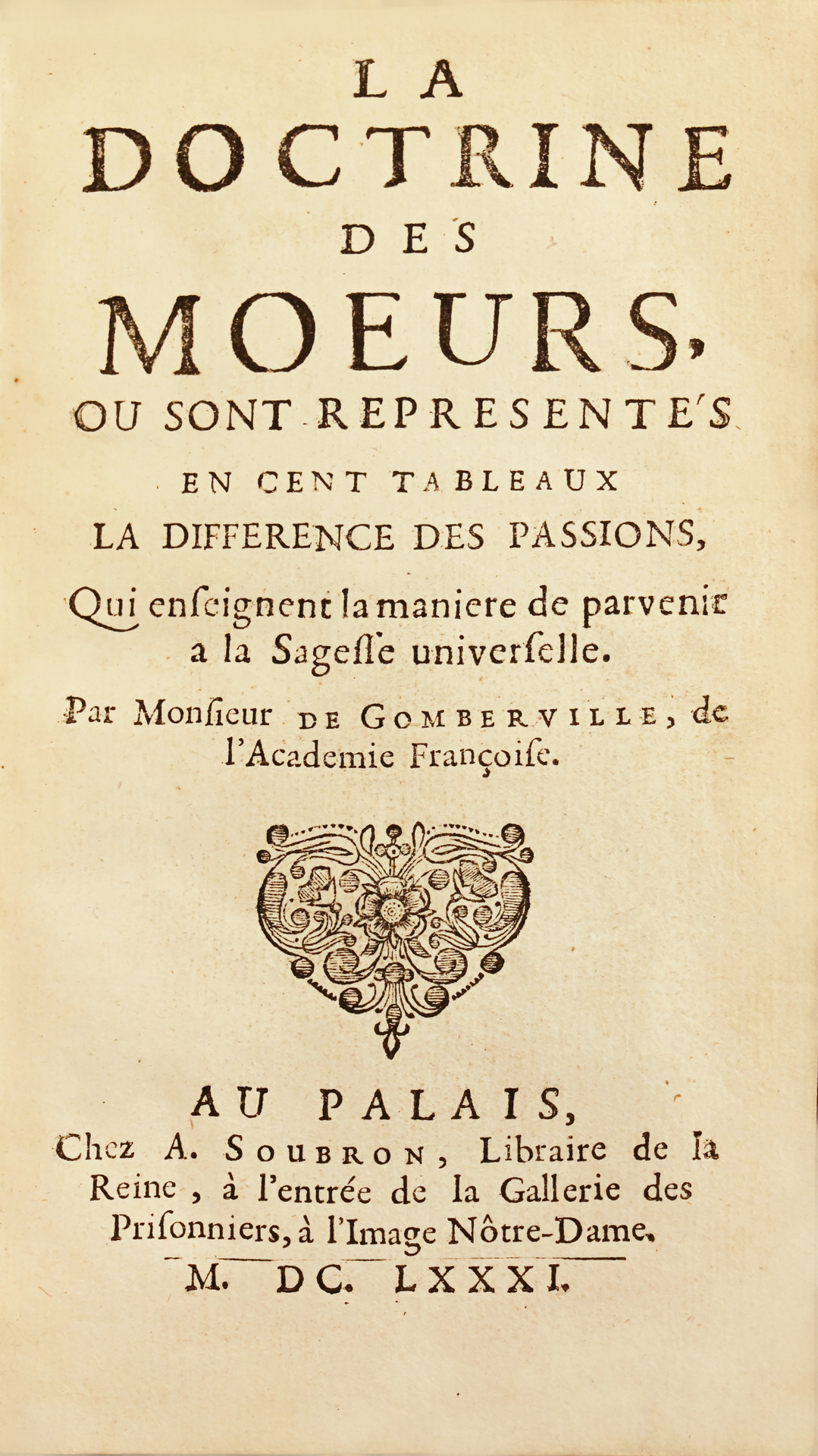Au Palais, (Paris), Chez A. Soubron, 1681.
12mo of (16), 412 pp., 103 full-page figures included in the pagination, several initials, head pieces and typographical floral ornaments. Full red morocco, triple gilt fillet around the covers, large gilt fleur-de-lys at the corners, spine with fleur-de-lys, inner gilt border, gilt edges. Binding of the time with royal destination.
158 x 90 mm.
“The 103 engravings make all the price of this work” (Michaud).
First 12mo edition published after the folio edition of 1646.
A luxury work, a volume of pomp disguised as a walk of moral meditation, this parade of images, quotations and commentaries charged with edifying the soul and guiding it to the crossroads of its human destiny adds its stone to the wall that the France of lucid reason and solar monarchy erects against the darkness of melancholy enveloping baroque Europe in its shadowy mantle. Between Descartes’ Principes de la philosophie (1644-1647) and Paradis Perdu de Milton (1667), La Doctrine des mœurs (1646) illustrates with its balanced, ordered and structured images the French reaction to the anguish of a world that will emerge from the Thirty Years’ War in 1648.
This commissioned book fits naturally into Gomberville’s literary universe, even if its genesis attests to the existence of editorial calculations and courtier issues. The reading of the engravings and texts collected by Van Veen in fact testifies to a meditated project of reorientation: intended for an eight-year-old king and addressed to youth, this illustrated collection of morals testifies to a coherent pedagogical and psychological intention based in part on the charm and power of figurative representation. These conclusions invite us to reconsider the naive hypothesis of a beautiful illustrated book and to accredit the thesis of a school of images.
At the age of fourteen, Gomberville published a volume of poems, composed of one hundred and ten quatrains whose subject announces a maturity of judgment quite extraordinary in a child of that age. It is the picture of the happiness of old age opposed to the agitations of youth. He then composed novels full of high feelings and imaginary adventures attributed to real characters. It was the taste of the century: and those of Gomberville had such a success that at the formation of the Academy, the cardinal of Richelieu designated him one of the first members.
The richness of his imaginary universe and his conception of a novel with great spectacle are today appreciated at their just value and largely entailed the rehabilitation of a novelist whose qualities and ambition are better measured.
A precious and elegant copy preserved in its contemporary morocco with fleurs-de-lys, of royal provenance, entered in the library “Joannis Francisci Chaussat ” with armorial bookplate and ” Maria Catharina de Pradon “.
See less information
